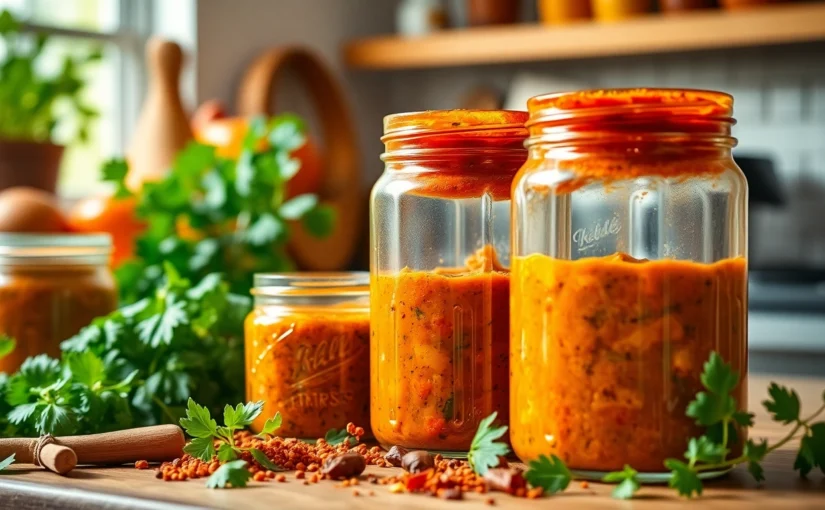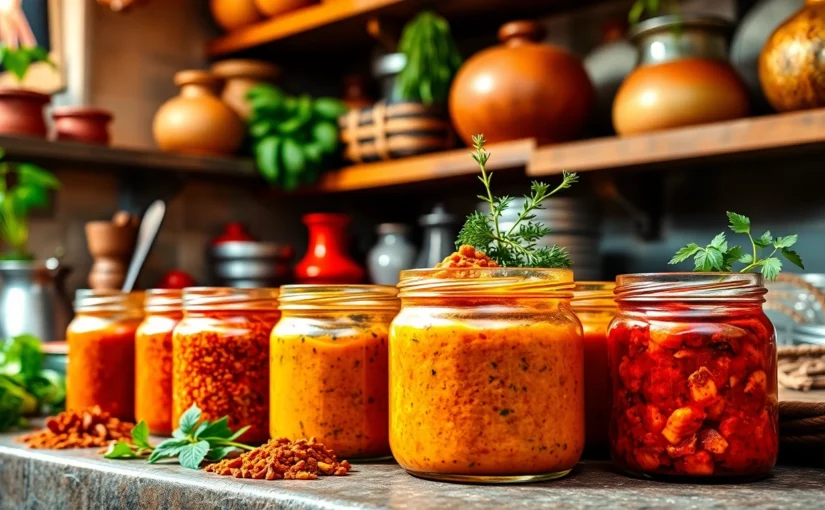Unlocking Culinary Excellence with Premium Curry Paste: A Comprehensive Guide
In the world of gourmet cooking and authentic cuisine, the role of a high-quality Curry Paste cannot be overstated. It serves as the foundational element that layers rich flavors, traditional aroma, and vibrant colors into a dish. Whether you are a professional chef, an enthusiastic home cook, or a food business owner, understanding the nuances of selecting, incorporating, and enhancing curry paste is vital for elevating your culinary creations. This comprehensive guide delves into the significance of curry paste, its historical roots, diverse types, selection tips, innovative uses, and how Spice Nest’s authentic products can transform your cooking experience.
Understanding the Basics of Curry Paste
At its core, curry paste is a blend of ground spices, herbs, and other ingredients meticulously prepared to infuse dishes with a concentrated burst of flavor. Unlike powders which are dried and ground spices, curry pastes are often freshly prepared or processed to retain essential oils and aroma compounds, offering a more intense flavor profile. The paste typically includes ingredients such as garlic, ginger, turmeric, chili, coriander, cumin, and sometimes complex additions like lemongrass or kaffir lime leaves, depending on regional recipes.
This concentrated form allows cooks to swiftly build layers of flavor that develop as the dish cooks, ensuring depth and authenticity. It also offers a convenient way to create traditional dishes without the need for multiple spice additions at different stages of cooking.
Historical and Cultural Significance
Curry paste has a storied history rooted in the rich culinary traditions across Asia, Africa, and the Caribbean. Every region has developed unique variations, influenced by local spices, climate, and cultural preferences. For instance, Thai curry pastes often feature aromatic herbs like lemongrass and galangal, while Indian masalas might emphasize cumin, coriander, and turmeric proportioned to regional tastes.
Traditionally, curry pastes were handmade by women in communities, passed down through generations, and crafted using mortar and pestle to preserve the essential oils and flavors. Today, while modern technology allows for mass production, authentic brands like Spice Nest ensure that traditional methods are retained, delivering the same depth of flavor and authenticity expected by culinary connoisseurs worldwide.
Types of Curry Paste for Different Cuisines
The vast diversity of curry paste aligns with the culinary landscape of various regions:
- Thai Curry Pastes: Distinct for their aromatic herbs such as lemongrass, kaffir lime, and galangal. Examples include Red, Green, and Massaman curry pastes, each offering unique flavor profiles.
- Indian Curry Pastes: Rich, earthy, and robust with ingredients like turmeric, cumin, coriander, and ginger. These pastes are foundational in dishes like Butter Chicken, Madras, or Kolhapuri.
- Malaysian and Indonesian Curry Pastes: Incorporate ingredients like turmeric, coriander, and local spices, often blended with coconut milk and chili for a creamy, spicy experience.
- Specialty Variations: There are also regional specialities such as Rajsthani Chilli Garlic Chutney and Dry Bhakhri, which complement curry dishes and add local authenticity.
Selecting the right type of curry paste depends on the specific cuisine, flavor profile, and dietary preferences you aim to achieve in your dishes.
How to Choose the Best Curry Paste for Your Cooking Needs
Factors to Consider: Ingredients and Quality
Quality is paramount when selecting curry paste. Passionate cooks and professional kitchens prioritize products made from natural, preservative-free ingredients. Check for transparency in ingredients; authentic curry pastes typically list whole spices, fresh herbs, and natural preservatives. Watch out for additives, artificial coloring, or flavor enhancers which can diminish authenticity and health benefits.
Branding and Certification Tips
Choose brands with reputable certifications such as FSSAI, ISO, or organic labels that ensure quality and safety standards. Spice Nest, for example, is a certified manufacturer and exporter known for its authentic, preservative-free curry pastes. Certifications act as trust indicators, especially for businesses aiming to source premium products consistently.
Where to Source Premium Curry Paste
While local markets and supermarkets may offer pre-packaged options, sourcing directly from reliable manufacturers like Spice Nest guarantees freshness, authenticity, and consistent quality. International food expos and trade fairs are excellent venues to discover top-tier products—an opportunity Spice Nest frequently capitalizes on, showcasing their offerings globally.
Innovative Ways to Incorporate Curry Paste in Recipes
Traditional Cooking Techniques
Traditionally, curry paste is sautéed in oil to release its flavors before adding other ingredients. This technique, called “frying the paste,” is vital in Indian and Thai cuisines to develop aroma and taste. For example, frying curry paste with onions and garlic forms a flavor base for gravies and stews, resulting in a rich and layered profile.
Modern Fusion Recipes
Copying traditional methods, modern chefs blend curry paste into innovative recipes such as curries with roasted vegetables, fusion tacos, or even pizza sauces. Using curry paste as a marinade for proteins like chicken or seafood renders dishes flavorful and tender within minutes. For health-conscious consumers, mixing curry paste into soups or smoothies can also infuse a spicy kick.
Meal Preparation and Storage Tips
Proper storage extends the shelf life of your curry paste. Keep it in airtight containers in a cool, dry place or refrigerate for up to a few weeks. For longer storage, freezing small portions in ice cube trays is an effective strategy, allowing easy access for future meals and maintaining optimal freshness.
Boosting Cuisine with Authentic Curry Pastes from Spice Nest
Product Highlight: Our Premium Curry Pastes
Spice Nest offers a diverse range of authentic curry pastes, meticulously crafted from the finest, natural ingredients. Their Thai Curry Pastes—Red and Green—are packed with aromatic herbs and spices, suitable for creating signature dishes. Indian varieties such as Kolhapuri and other regional blends are perfect for delivering traditional flavor with convenience.
Customer Success Stories and Testimonials
Many culinary professionals and home chefs have lauded Spice Nest’s curry pastes for their rich aroma, authentic taste, and ease of use. Testimonials highlight how these products reduce preparation time while elevating dish authenticity, making them a preferred choice globally.
Special Offers and Customization Options
Spice Nest provides customizable packaging and bulk orders tailored to bulk buyers or restaurants. They often run promotional offers, emphasizing their commitment to quality and customer satisfaction, facilitating opportunities for businesses to enhance their product offerings.
Measuring Performance and Enhancing Culinary Skills
Key Metrics to Track Recipe Success
Monitoring customer feedback, repeat sales, and culinary consistency are vital indicators of successful incorporation of curry paste. Chefs should assess the flavor balance, aroma retention, and presentation to refine their recipes continually.
Feedback and Continuous Improvement
Encourage feedback from diners, customers, or team members to identify areas for improvement. Adapt recipes by adjusting spice levels or experimenting with complementary ingredients to achieve preferred taste profiles.
Training Resources and Cooking Tips
Investing in culinary training, such as workshops or online tutorials, can enhance proficiency in using curry paste effectively. Spice Nest offers expert tips and recipes on their platform, empowering cooks to maximize product potential.


